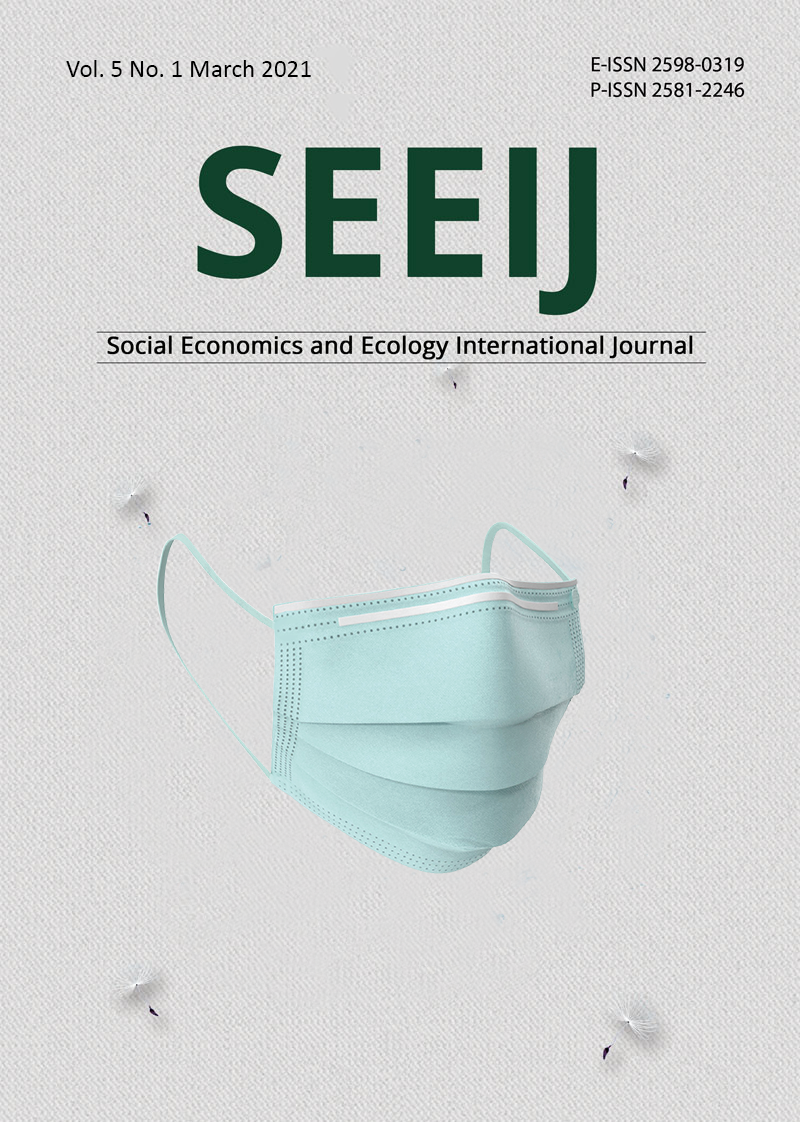Analysis of the relationship of the learning video with students 'understanding of learning materials
DOI:
https://doi.org/10.21512/seeij.v5i1.7369Keywords:
education, mathematics, RPTRA, VBLAbstract
The aim of the study was to examine the relationship between the relationship between instructional videos and students' understanding of the learning material. Researchers create digital learning materials through video material (VBL), especially math in RPTRA. The researchers used correlation analysis to examine the relationship between the learning material in video form and the level of understanding of the students in the material. The method used by the researcher was to experiment with elementary-level children from various primary schools. Then, based on the experimental results, the correlation analysis test was performed to see the relationship between the student's understanding and the learning material through video. From the results of the assessment, it can be seen that the video material can help the understanding of the students and can also increase the motivation of the students in learning mathematics. Therefore, video learning can help students understand mathematics and help teachers teach mathematics in a more interesting way.
References
Celis Nova, J., Isabel Onatra Chavarro, C., & Tatiana Zubieta Córdoba, A. (2017). Educational videos: a didactic tool for strengthening English vocabulary through the development of affective learning in kids 1 Videos educativos: una herramienta didáctica para el fortalecimiento del vocabulario en inglés mediante el desarrollo del aprendizaje afectivo en niños, 14(14), 68– 87.
Herlina, N., & Nadiroh, N. (2018). Peran Strategis Ruang Publik Terpadu Ramah Anak (Rptra) Dalam Rangka Pemenuhan Hak Anak Terhadap Lingkungan. JPUD - Jurnal Pendidikan Usia Dini, 12(1), 104–117. https://doi.org/10.21009//jpud.121.09
Kaya, D., & Aydin, H. (2016). Elementary mathematics teachers’ perceptions and lived experiences on mathematical communication. Eurasia Journal of Mathematics, Science and Technology Education, 12(6), 1619–1629. https://doi.org/10.12973/eurasia.2014.1203a
Lin, M. H., Chen, H. C., & Liu, K. S. (2017). A study of the effects of digital learning on learning motivation and learning outcome. Eurasia Journal of Mathematics, Science and Technology Education, 13(7), 3553–3564. https://doi.org/10.12973/eurasia.2017.00744a
Prakoso, S., & Dewi, J. (2017). Child-friendly integrated public spaces (RPTRA): Uses and sense of attachment S. Iopscience.Iop.Org, 8(February 2018), 68–74. https://doi.org/doi:10.1088/1755- 1315/126/1/012199
Rothman, D. (n.d.). 2016_tzunami generation z.pdf.
Saleh, M., Charitas, R., Prahmana, I., & Isa, M. (2018). Improving the Reasoning Ability of Elementary School Student Through the Indonesian Realistic. Journal on Mathematics Education, 9(1), 41–54.
Downloads
Published
How to Cite
Issue
Section
License

This work is licensed under a Creative Commons Attribution-NonCommercial 4.0 International License.
The Authors submitting a manuscript do so on the understanding that if accepted for publication, copyright of the article shall be assigned to SEEIJ Community Development Academic (CDA) Bina Nusantara University as publisher of the journal.
Copyright encompasses exclusive rights to reproduce and deliver the article in all form and media, including reprints, photographs, microfilms and any other similar reproductions, as well as translations. The reproduction of any part of this journal, its storage in databases and its transmission by any form or media, such as electronic, electrostatic and mechanical copies, photocopies, recordings, magnetic media, etc., will be allowed only with a written permission from SEEIJ Community Development Academic (CDA) Bina Nusantara University.
SEEIJ Community Development Academic (CDA) Bina Nusantara University, the Editors and the reviewer make every effort to ensure that no wrong or misleading data, opinions or statements be published in the journal. In any way, the contents of the articles and advertisements published in the SEEIJ are sole and exclusive responsibility of their respective authors and advertisers.

This work is licensed under a Creative Commons Attribution-NonCommercial 4.0 International License.









